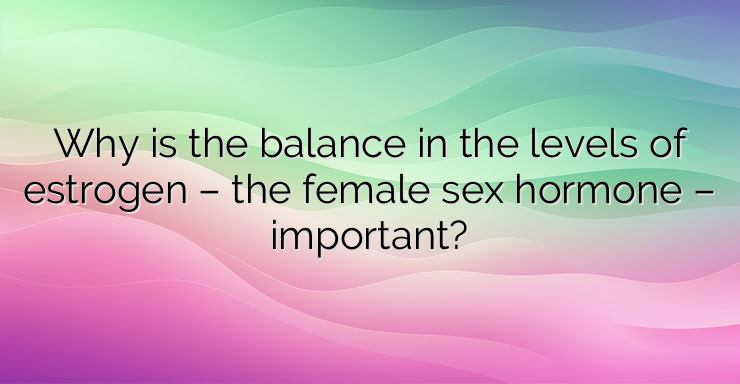There is no stage in a woman’s life that is not related in one way or another to hormonal balance and especially to estrogen levels. The activity of this female sex hormone, which originates in the ovaries, is not only essential for the development of the female reproductive system, but also with the functioning of many organs and tissues. Why is estrogen balance important? Estrogen levels change slightly throughout a woman’s life, but generally remain stable in reproductive age. When their concentration is optimal, hormones have a positive effect on health: They keep bones healthy – the bone structure is always renewed and estrogens contribute to the balance between its formation and destruction. Estrogens counteract the effects of hormones that make bones brittle and porous. They protect the heart – in addition to aiding fat metabolism, estrogens also regulate bad cholesterol levels and increase good cholesterol. A study published in The New England Journal of Medicine has shown that estrogen activity prevents the formation of calcium deposits on arterial walls, reducing the risk of clogging of blood vessels. All this shows that when estrogen levels are optimal – in reproductive age, women are protected from cardiovascular incidents. Support memory and brain health – estrogen has the ability to stimulate blood flow to the brain. Therefore, it contributes to a good cognitive state and memory maintenance. Contribute to good mood – estrogens affect the proper functioning of neurotransmitters in areas of the brain involved in emotions, such as the amygdala, hippocampus and prefrontal lobes. In this way, estrogens modulate emotional experiences. For this reason, greater irritability may be felt during certain phases of the menstrual cycle. Give resistance to stress – a study by the University of Buffalo (USA) has shown that what makes women withstand stress better is the protective effect of estrogen. Healthy skin – estrogens are responsible for maintaining collagen, a substance that gives skin strength and elasticity. As estrogen levels decrease, the skin loses elasticity and becomes easily dehydrated, making it more sensitive and prone to wrinkles. Increase in estrogen levels During the 14th and 28th day of the menstrual cycle, an increase in estrogen is observed, which also occurs naturally during pregnancy. Estrogen levels can increase due to poor nutrition: With poor nutrition and weight gain, organs other than the ovaries begin to secrete estrogen, so the circulating amount becomes greater than necessary. Prevention of obesity counteracts this effect. High fat consumption increases estrogen levels and can increase the risk of breast cancer.Increased risk of tumors – estrogens favor the activity of mammary gland cells. Therefore, if the levels of this hormone increase, it may favor the development of breast cancer. Fibroids – benign tumors of the uterus, also develop due to an excess of estrogen. Other research in Mexico has linked its excess to a higher risk of developing lung cancer in women. Lower consumption of red meat and sausages, full-fat dairy products, alcohol and sugar help lower estrogen levels. On the other hand, the consumption of foods rich in fiber should be increased: it is known that women whose diet is high in fiber have optimal estrogen levels. Low Estrogen Levels Estrogens maintain stable levels until 35-40 years of age. After that point they begin to decrease, and later – with the onset of menopause – they decrease further, to one-tenth of baseline levels. This causes a number of changes: With a lack of estrogen, bone structure and tone are disturbed, which can cause bone fragility, increased fractures and osteoporosis. An adequate level of estrogen has a positive effect on the central nervous system and has been shown to stimulate libido. Low estrogen levels can cause sudden mood swings and lead to irritability. Regular sex contributes to optimal estrogen levels. References: https://www.sabervivirtv.com/ginecologia/estrogenos-que-son-como-afectan-subidas-bajadas-hormonas_3391


Leave a Reply